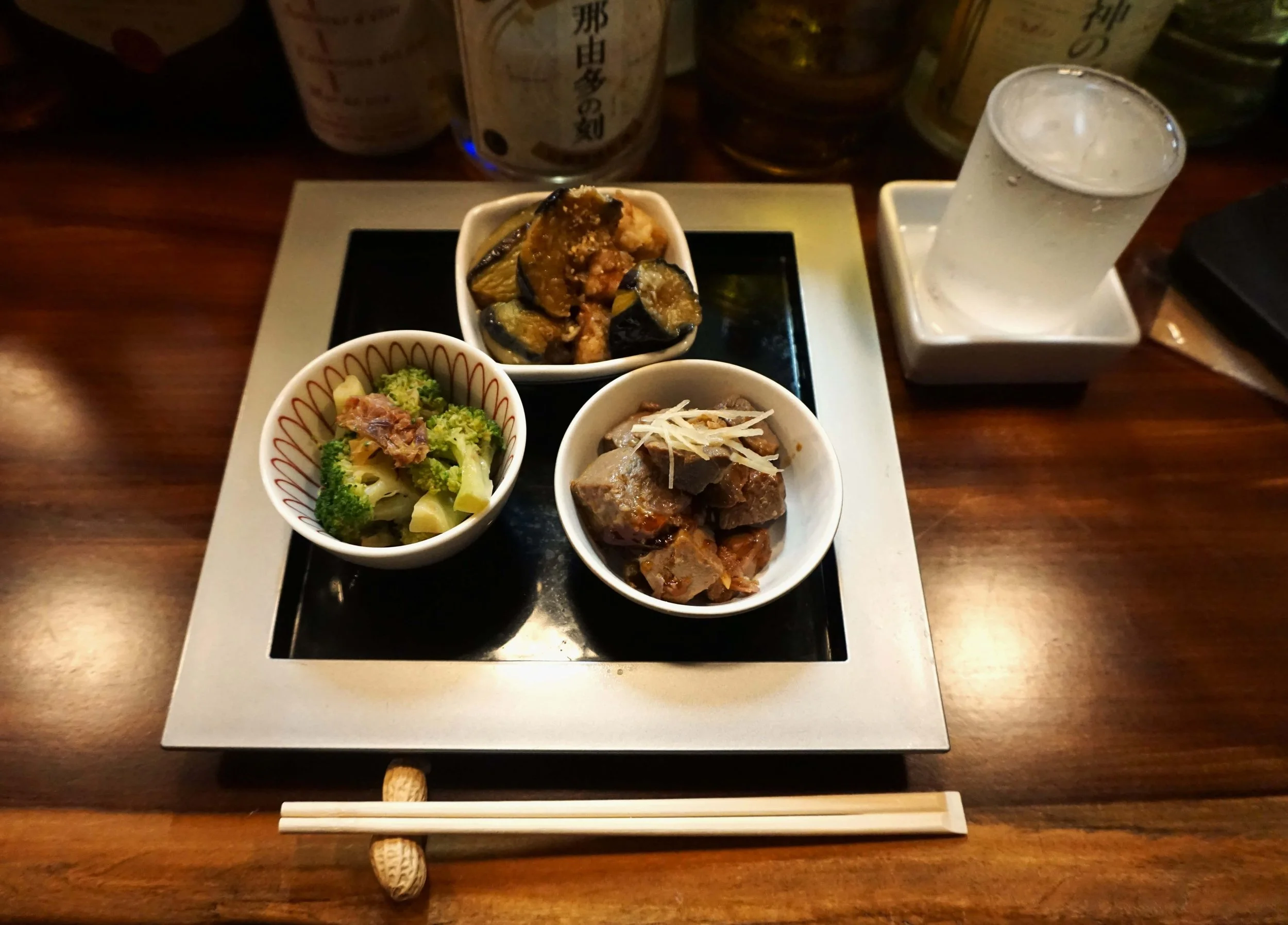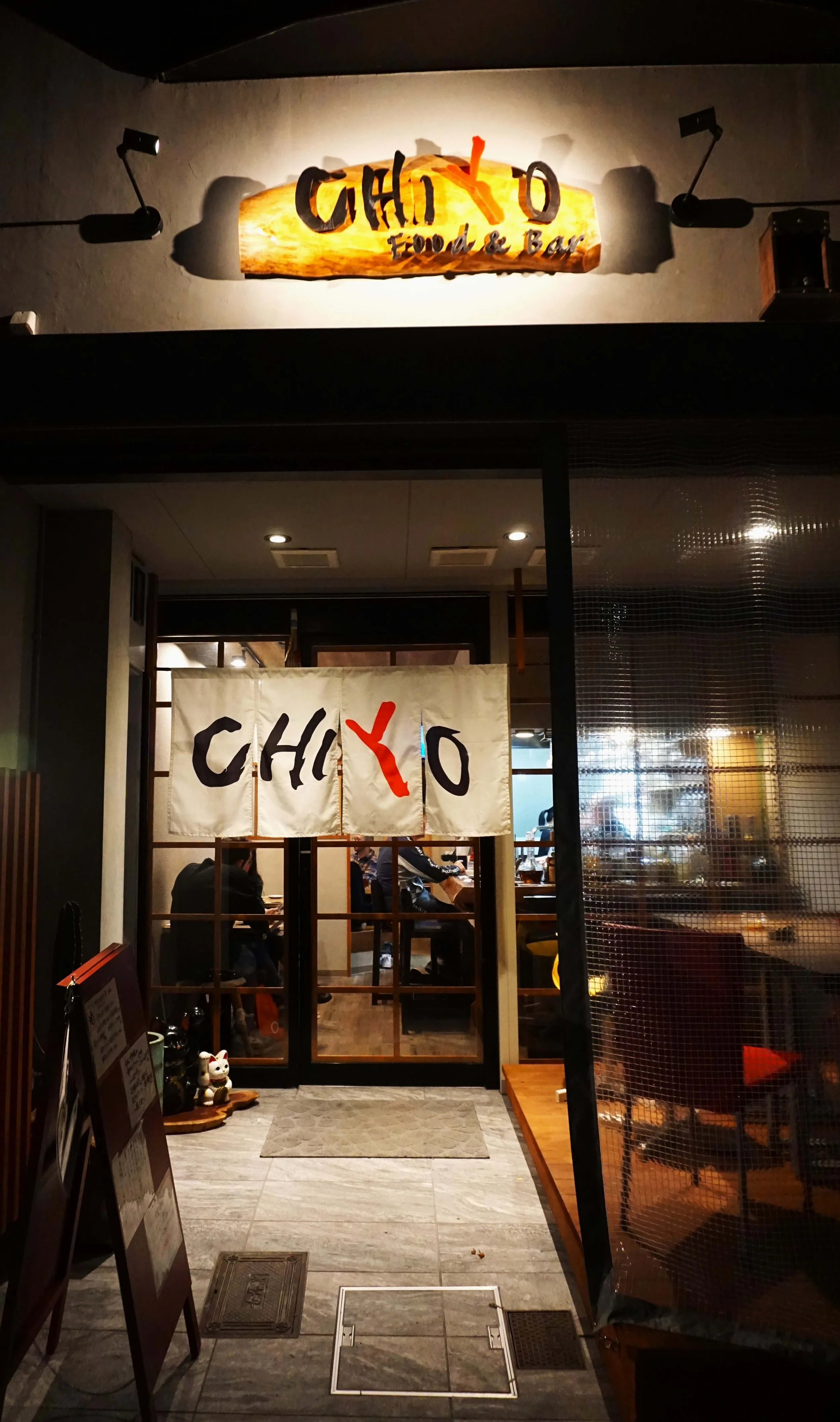Let eating just be eating
Dinner doesn’t have to be complicated.
When you have only a few days to spend in a place, especially if it’s a gastronomy capital like Kyoto, the pressure is on to make every meal spectacular. There’s less space in a human stomach than there is in the average suitcase – must fill it with The Best Meal Ever!
This brings no small amount of tension, from the search for restaurants and the effort to secure reservations to the day itself, when the whole dining experience is consumed by mental calculations to decide if this is really The Best Meal Ever or if you should have gone elsewhere. Then there are the phone gymnastics as you try to document the whole experience.
For one or two meals at least, let yourself set all that aside. Try something with less than stellar ratings or no ratings at all. Have no expectations; have the meal itself. Let eating just be eating.
This may sound like a radical way to dine when you’re on holiday. If that holiday happens to be in Kyoto, try it out at Chiyo.
A relaxed izakaya away from the city centre and popular tourist spots, Chiyo has been feeding people for more than 40 years. There isn’t much information about it, even on Japanese websites, but it has a devoted following of regulars, a few of whom go almost every day.
There was a time when I walked past the eatery as part of my daily routine and, one day, I walk in.
There’s certainly enough variety on the menu to dine there every day. There’s obanzai – traditional Kyoto home cooking – as well as meat and seafood served in a variety of ways: raw, grilled, stewed, deep-fried or just fried. There are carbs a-plenty: soba, yakisoba, rice, garlic rice, fried rice, egg porridge and something called “neither yakiudon nor spaghetti”.
And there’s personality, a reflection of owner-chef Matsumoto Ryuichi. A former bartender who continues to serve cocktails even as he blow-torches salmon, he looks like an elder stateman of the small screen. The bow tie helps.
When I step in on a chilly autumn night, he tells me to sit wherever I like – there’s space at the little tables and the counter. I join the three men there. The Master needs a supporting cast and here they are. From the way they chat with the chef, they are clearly regulars. Grizzled is the word that comes to the mind. Midnight Diner are the next two.
When I ask the chef for sake recommendations, Regular No. 2 comes to the rescue. “Tateyama is oishii,” he says.
So I order Tateyama. To do otherwise would be bad karma and bad manners all round.
Tateyama arrives in a glass sitting in a square dish. The sake has been poured to the brim of the glass, overflowing into the dish. The junmai ginjo’s bit stronger than the sake I usually have but it’s not bad at all.
I should say something about the décor since this is a restaurant piece. The place isn’t fancy – you probably got that already – but it doesn’t need to be. You’re not there to take photos; you’re there to eat.
While you’re at it, hang like a local. Don’t spend too much time on your phone. Look around, make eye contact, nod at your fellow diners and smile at the staff. In other words, interact with humans as we used to do before wi-fi.
If you’ve never known a world without wi-fi, never mind. Just switch off your phone and make it up as you go along. That’s how we used to do it in the days before the Internet gave us all the answers.
The conversation wanders, all the way to the dark side. The regulars are talking about someone from the world of academia who turned to crime. A femme fatale seems to have been part of the mix.
“Was anyone killed?” asks the chef.
“Yes, accidentally.”
The conversation moves to another gripping subject: Shohei Otani and his recent injury. Baseball has been compared to a national religion but it isn’t, really. People in Japan don’t talk about religion much. These days, though, it seems like almost everyone – even my tea teacher – is talking about Otani.
The kushikatsu arrive. I can’t quite work out what has been stuck onto those skewers; you can disguise all manner of things by coating them in batter and dunking them in hot oil. But the kushikatsu crunches like a cornflake commercial and the mystery meat tastes fine, so no questions will be asked.
I add an order for plain rice because it’s not plain at all. Chiyo serves up great rice and the obanzai – I picked stewed maguro, broccoli and eggplant – cries out for it like cheese crying out for any tomato in the vicinity to hop in an Uber and head over.
The bill comes up to a reasonable 2,200 yen for five sticks of kushikatsu, three obanzai dishes, rice, pickles and a glass of sake.
Those cucumber nukazuke pickles… I finished them to be polite but Regular No. 2 didn’t. Still, to have only one low point in an entire meal is a great batting average.
I’ll be going back to try the Kyo-shibazuke chahan – rice fried with shibazuke from a well-known pickle shop nearby – as well as the “neither yakiudon nor spaghetti” noodles.
I probably won’t bother taking out my phone because I’ve seen photos of the dishes – however good they may be, they’e not Instagramable. And that’s okay. They’re not meant for social media consumption; they’re meant for consumption. By you. Not your phone. You. Because you are the one in need of feeding and you matter more than a phone.
Sometimes – in fact, most of the time – it’s okay to just have dinner. If you happen to be in south Kyoto, try having it at Chiyo.
P.S. Cash only.

